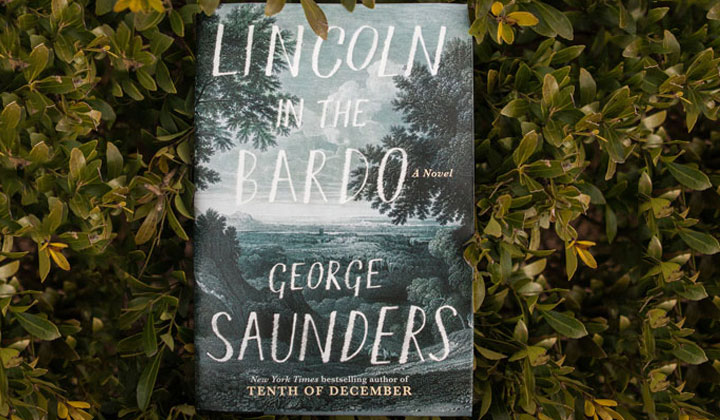 Lincoln in the Bardo by George Saunders
Lincoln in the Bardo by George Saunders
My rating: 5 of 5 stars
Any writer can break the rules of our craft. If he does it poorly the resulting pieces remain at our feet and the confused reader is left to kick at them unsatisfied, like viewing the aftermath of an accident. But if the writer succeeds, he breaks rules to the point where he actually plants the resulting debris and a new form grows. The reader takes in the nascent creation with either bewilderment and possible dislike or sheer wonder. From the comments I’ve consumed about Lincoln in the Bardo, readers report from both viewpoints. Here’s my take. I started on the bewilderment side and ended this book in wonder.
George Saunders’s debut novel is set in a time of upheaval, the early days of the Civil War, when the country was only beginning to realize the horrible depths it was careening toward. President Lincoln’s young son Willie, age eleven, takes ill and dies. His body is placed in a crypt in a cemetery populated by a whole community of less than restful souls. But one night Lincoln, burdened by worry and grief, feels impelled to return to the tomb to visit his lost child. What he leaves with and how he does so is a striking fulfillment of this tale.
Here’s where the rule-breaking comes in: The story is told at a distance, through the observations of the dead souls and through historical source material Saunders uses abundantly though I couldn’t tell which of these many footnotes were based on real material and what was imagined. Fiction craft lessons often teach writers to create characters who are active, not passive, and who can bring urgency to the narrative while at the same time inciting emotion, positive or negative, from the reader. When I began reading Lincoln in the Bardo, I was skeptical. I didn’t see how Saunders could conjure urgency, action, or emotion when the main character, President Lincoln, is for the most part a quiet, introspective, grieving presence and everyone else, a host of strangers without historical significance, was dead.
My curiosity kept me reading and I’m glad I did because Saunders succeeds in all this and that is the miracle of the book. I won’t say how he creates urgency, but I will speak a little on the emotional aspect.
At first I wasn’t interested in these ancillary characters. They spend a lot of time talking, stating their cases, and telling their own death stories. They rarely listen other than to appraise another person’s situation and compare whether they are better or worse off than the other. I kept wanting to get back to Lincoln: Where is he? What’s he doing? But there came a pivotal scene, which I won’t reveal here, where that situation changes and I realized or recognized something I can only describe using the lyrics from John Lennon’s “I Am the Walrus”: “I am he as you are he as you are me/ And we are all together…”
They are us. These characters represent all of us.
The scene provides a kind of light for the lost souls and one character, Mr. Vollman, observes, “My God, what a thing! To find oneself thus expanded!” These souls are essentially seeking, as we who are living are also seeking, a sense of connection—a certain wholeness. How they come to it is one of the most touching parts of the narrative. Their realization opens the world for them and, for me, turned the book into a profound statement of empathy, compassion, and what it means to be human. As a reader I felt moved; as a writer I felt delight over what the author had accomplished. I wanted to read the book again, immediately, so I could better understand and appreciate how Saunders, with such expert craftsmanship and many twists and turns, had built the book.
Writers read for enjoyment, yes, but we also read to learn what art is possible to craft from our tools, which range from basic words and sentences to scintillating, airborne imagination. With Lincoln in the Bardo, an impressive demonstration of skill and imagination, Saunders, simply put, shows a new way of presenting a story. I hope he inspires many writers to let loose in mind and spirit, and see what we can share in our own ongoing quests, acknowledged or not, for wholeness.



